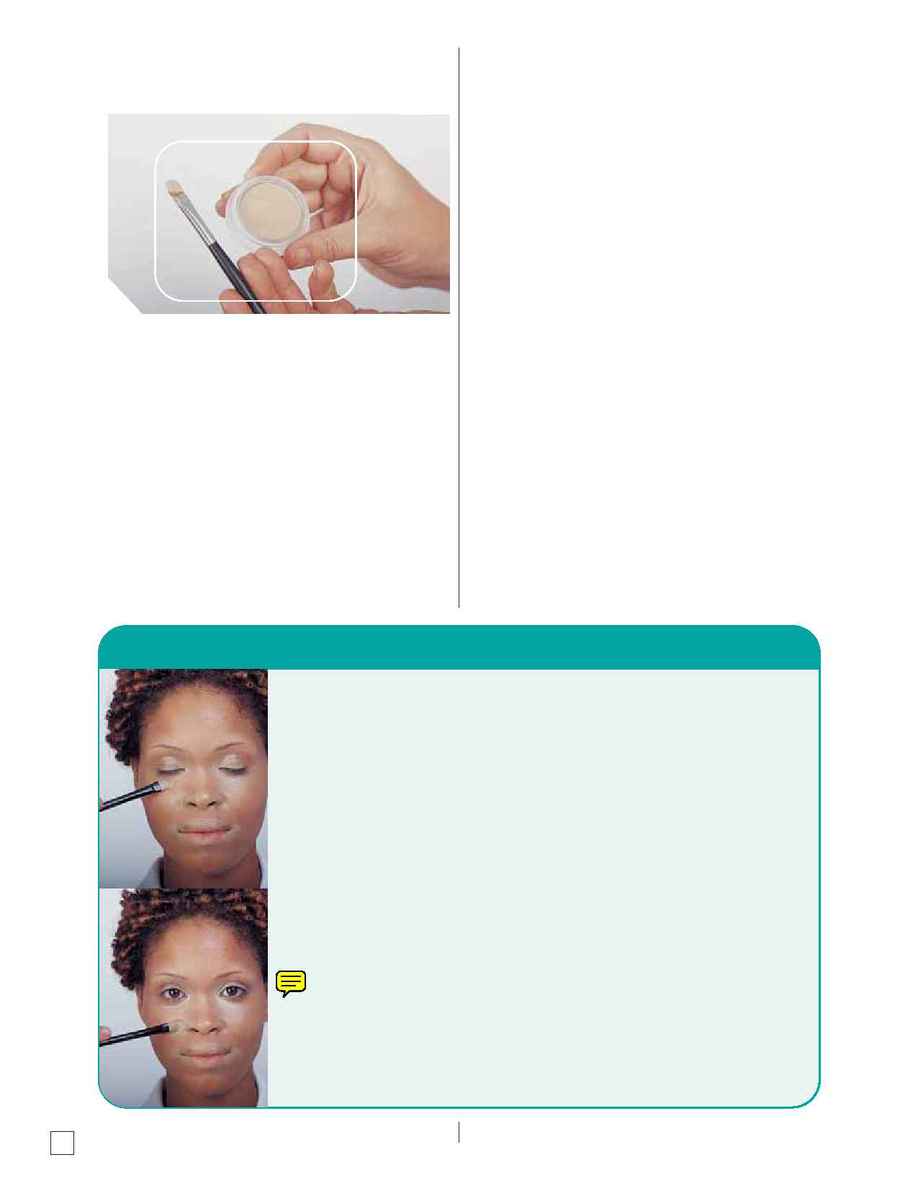
m a k e u p
Salon Fundamentals
TM
Esthetics
422
Begin by removing a small amount of product from the container with a
spatula. Work off of the spatula with a brush, or transfer the product onto
your palette.
1. Using a small, synthetic, oval-tipped brush, dot concealer on all or some
of the areas that tend to be dark or recessed. These are: the upper and
lower inside corners of the eyes; the fine line beneath the lower lashes;
the outside corner of the eye; the sides of the nostrils; the outer corner
of the mouth and the recession above the chin.
2. Blend each area by feathering the edges with the brush.
3. Using a cosmetic sponge, continue to blend with a tap and roll motion.
Remove excess product at this point.
* Some makeup artists prefer to apply foundation prior to concealer. Either
method is acceptable.
Concealer
It is often necessary to correct particular facial
imperfections. Problems such as under-eye
circles (often with blue or purple undertones)
dilated capillaries, blemishes and dark,
shadowed areas of the face can and should be
corrected. If they are not, they may stand out or
detract from the completed makeup design.
However, correction must be done subtly,
particularly when performing a light, day
makeup design. Heavy application of these
products can actually accentuate the problem.
Types of Concealer
Concealers are available in crème, liquid,
stick and pot formulations. Crème and liquid
concealers provide light to medium coverage.
Stick concealers provide medium to heavy
coverage and pot concealers provide the heaviest
coverage. Colors are available to match a range of
skin tones--light, medium and dark. They are
also available in peach, yellow and olive tones.
Selecting a Concealer
When concealing dark areas or blemishes, the
goal is to neutralize the undesired color rather
than to lighten or cover it. In order to achieve
a neutral appearance, a complementary color
is an appropriate choice for a concealer. For
example, if an under-eye circle or dark area
is blue or purple, use a light peach tone to
conceal the unwanted color. Refer to the
Color Schemes Wheel on page 410 to review
complementary colors.
APPLYING CONCEALER
